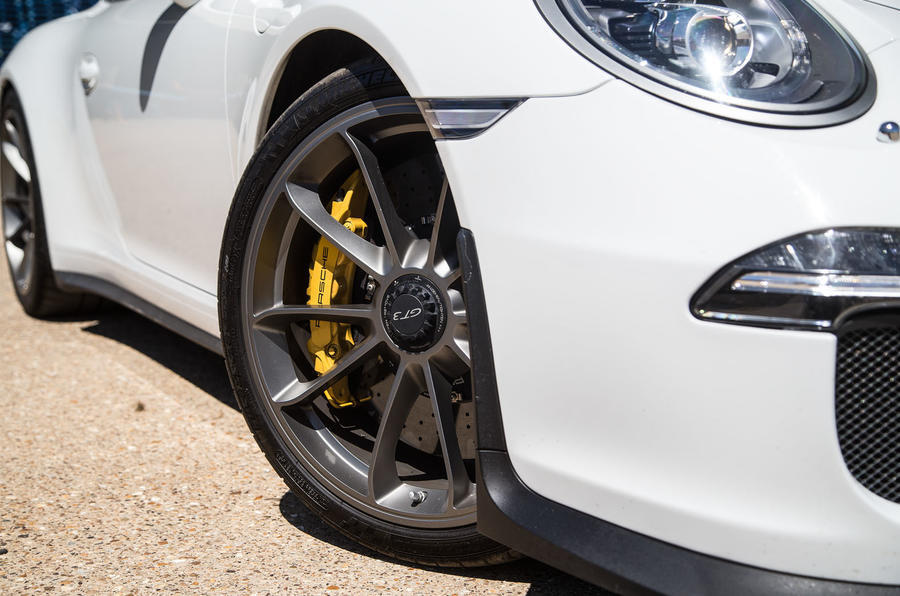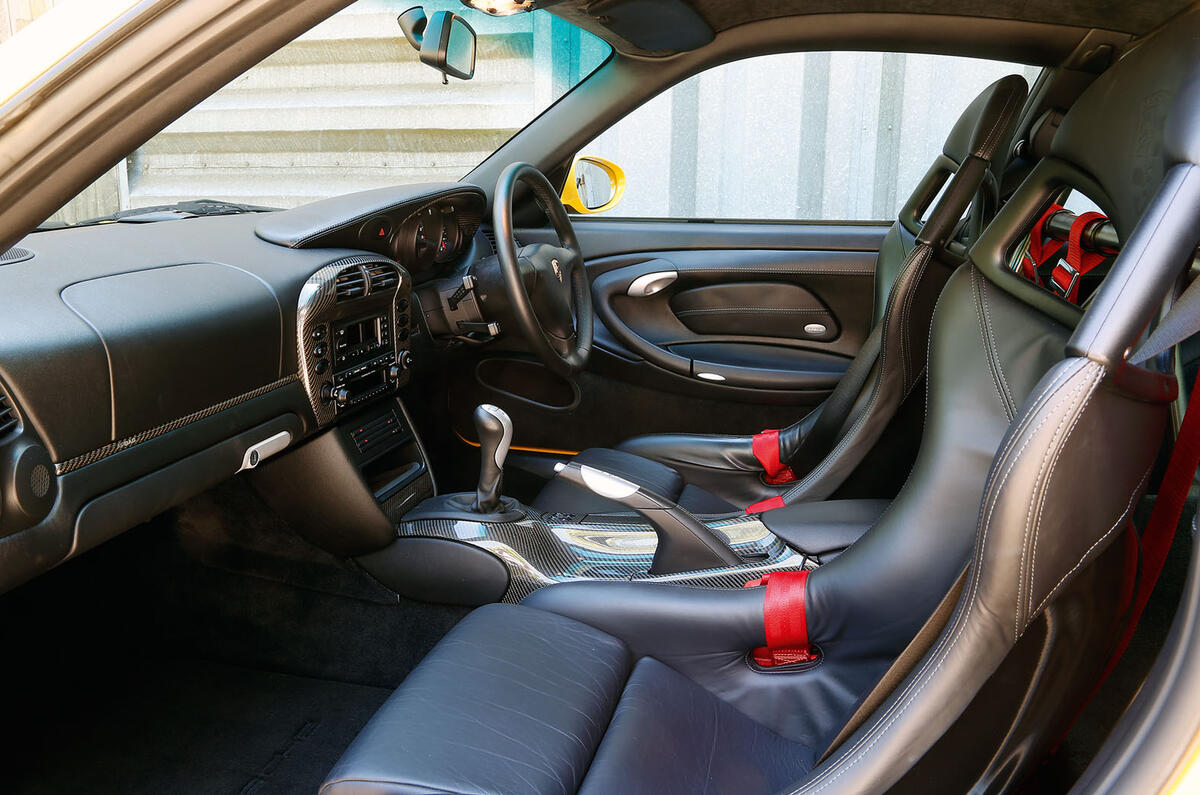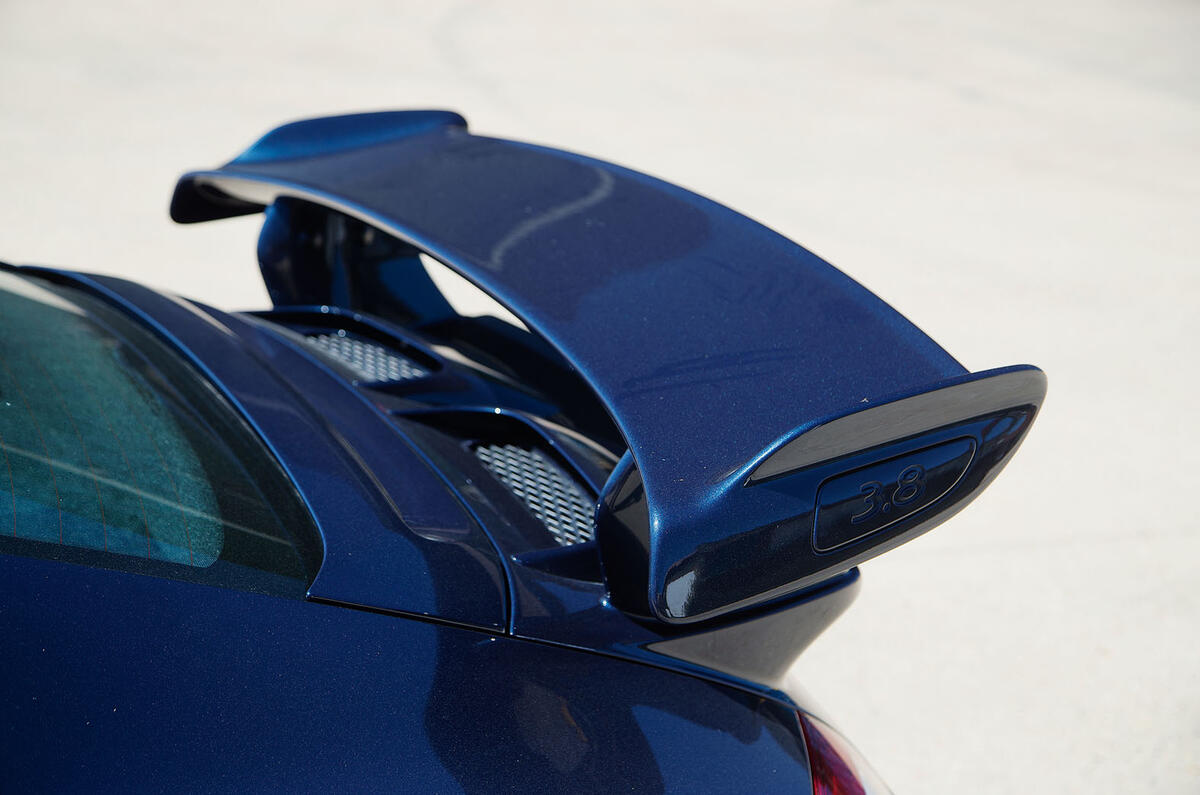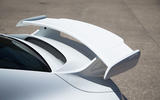What could be better than a day spent driving a Porsche 911 GT3 on deserted English country roads?
Normally, I might struggle to answer that, because for at least the past 10 years, when there has been a GT3 in production, there has never been any problem naming my favourite car on sale. Today, however, the answer is as clear as the sparkling skies above our heads. What’s better than a GT3? Three GT3s.
Now that Porsche has revealed the new 992-generation 911 GT3, we've been looking back at previous generations to trace the model's lineage. This story was originally published in August 2015.
We have gathered immaculate, stock-standard versions of all three generations of 911 GT3 to answer a question that is not as simple as it sounds: which best defines Porsche’s vision of a lightweight, track-tuned yet street-sensible driving machine? It’s not simple, because cars don’t automatically improve from generation to generation.
Was the last Jaguar E-Type as good as the first? Not even close. Today’s BMW M3 Competition is far quicker than the original, but better? That’s at least open to debate. But is there really anything a modern GT3 can learn from its forebears? That’s what we’re here to find out.
The 991 generation, we know plenty about. We know about its 9000rpm redline and a dual-clutch automatic gearbox as good as any on the market.

We know how its four-wheel steering preserves the benefits of its extended wheelbase while mitigating its drawbacks. We know what an extraordinarily effective and usable weapon this is – how well it deploys its 469bhp, how easy it is to manage on unforgiving roads. We know about its five-star road test, too.
What of the others? It’s hard to believe that the previous GT3, based on the 997 iteration of the 911, was first shown in 2006, or that the Gen 2 version we’re using today has been around for twelve years.
It was the last to use the blue-blooded old ‘Mezger’ race engine, completely different from those in all other normally aspirated 911s of its era and equally unrelated to that in all modern 911s, GT3 included. It offers 429bhp from its 3.8 litres, 40bhp less than the 991 offers from a similar (but not identical) capacity, a deficit offset only in small part by it being 35kg lighter.
Still, don’t read too much into the fact that its 4.1sec 0-62mph time is 0.6sec slower than the modern GT3’s. That says far more about the 991’s launch control and instant-shift transmission than the far smaller real performance gap between the two.
The same cannot be said for the 996-generation GT3, which also has a Mezger engine, albeit a fifth of a litre shorter in stature. It’s 54bhp shy of the 997 and 94bhp off the 991’s power, and although it’s lighter than both, it’s only a mere 15kg below the 997’s weight. Its 4.5sec 0-62mph sprint is quick, but it’s still a like-for-like 10% slower than the 997.

Then again, you will pay a lot less for a 996 GT3 and drive a car that is rarer than the other two. Prices for unmodified, uncrashed cars start at around £60,000 and rise to as much as £85,000 for an immaculate, low-mileage cars like that seen here.
Gen 2 cars are more expensive than the originals, but not by much.
If you want a 997 GT3, you’ll be looking at £70,000 for a first-gen car but closer to £100,000 for a Gen 2 model, which means if you’ve had one from new and looked after it, it has probably been, in effect, a free car.
As for 991 GT3s, Porsche’s website still quotes a £100,540 list price but fails to mention that they’re no longer being built now that production has been given over to the GT3 RS. The reality is that the cheapest right-hand-drive standard 991 GT3 we could find is currently listing at £137,000, or more than double what you’d pay for a clean 996 GT3. It’s good, but is it that good?
I drove the 991 first because, as the most recent, it provides a benchmark against which the others may be judged. And it will have the breath out of your lungs on the first decent stretch of road.
It’s not the performance itself, but the way it is delivered – the sounds, the elasticity of its torque supply, the rifle-crack gearshift and that manic 9000rpm rev limit. They speak of a very special car indeed, one engineered to a point where it was more than good enough, then engineered a great deal more.

If anything, the 991 is more remarkable still in the corners, because its rear-engined, rear-wheel drive architecture has evolved so far that it has become the opposite of what 911s used to be: as tolerant of over-exuberance and driver error as its ancestors were merciless.
It doesn’t understeer in time-honoured 911 style, and its nose doesn’t bob up and down as 911 prows have for generations. It just turns in, accepts full power even before the apex and, with the four-wheel steering doing its thing, rockets away. For a car of such speed and ability, it is breathtakingly easy to drive.
But how easy should a GT3 really be? It’s a question Porsche has clearly been asking itself, and the proof lies not only in the fact that the new GT3 RS is no pussycat at all, but also in its as-yet-unannounced decision to reintroduce a manual GT3, just for those who care more about driving involvement than lap time.
You don’t have to travel far back in time to see how radically different even GT Porsches used to be. The 997 GT3 Gen 2 feels like it’s from another world. In all ways that can be easily measured or discerned, it’s a much worse car. It doesn’t feel as down on power as the figures suggest, but it’s still significantly slower, and although the 997 sounds wonderful in isolation, the 991 at maximum attack sounds unhinged.
The 997 also has substantially less grip, and once you’ve passed the technical limit, it develops an aversion for apexes that borders on the pathological. But the real reason it wouldn’t see which way the 991 went down a decent road is its damping. While it’s bobbing along, busy being a 911, the 991 will have soaked it all up and be streaking away into the sunset.
What, then, can the 997 offer in return? A sense of intimacy that, for all its sheer ability, the 991 lacks. No amount of Porsche magic can synthesise feel through an electrically powered steering rack as well as conventional Porsche hydraulic steering can pick it up straight from the road.
And the best paddle shift there is still provides no work for either your left leg or hand, an issue exacerbated by the fact that there is not a gearbox in the world greater than that fitted to the 997 GT3.
Even the workload created for you by its manifest failings – its uneven chassis balance and relative lack of poise – makes you feel more involved, because the car needs to be tamed in a way the 991 does not. It’s a curious thing to say, but the 997 is great to drive not despite its faults but very largely because of them.
Would you expect the 996 to rule itself out of the reckoning almost at once? I did. While the 997 could counter the 991’s superior power with its appeal to your senses, the 996 seemed unlikely to offer any more fun than the quicker, grippier and better-looking 997. Yet it was the 996 that provided the surprise of the day.
I’ll say now that the car supplied by Cambridge-based Autostore is a superb example and you may or may not get similar results from a leggier, less well-maintained one. But the first surprise was that this 11-year-old car was no more inclined to squeak, rattle, grumble or groan when flung down a tricky B-road than the nearly new 991. This 996, by reputation the most poorly constructed of all 911s, felt like it was built last week, not 11 years ago, and by Rolls-Royce.
But the shocker is that, on those roads, it was at least as much fun as the 997. The performance and grip differential were unimportant. What mattered more was the way it would dart into corners on its stiff springs and adjust its stance so readily according to the throttle position.
I like that the engine is quite sleepy below 5000rpm and then suddenly comes alive, and I like the small frisson of danger born from there being absolutely no electronic safety nets. (Even the 997 has traction and stability systems.) This is an entirely analogue car of which you are entirely in control, and with cars like this, that is how it should be, I think.

Where it loses, and significantly so, is in its relative lack of civility. You may not think a GT3 should be concerned by such matters, but I disagree; decent comfort turns an occasional toy into a car that can be enjoyed every day. And the real achievement of the two later GT3s is to do what they do yet also be decent daily drivers. The 996’s ride quality alone precludes it from that role.
Even so, if you want a GT3 just to have fun, there’s no need to spend a six-figure sum. Indeed, I would advise against doing so. A 996 GT3 Gen 2 is an incredible driving machine, a traditional Porsche sports car and all the better for it.
But I’d say the market has judged the 997 correctly. Although I’d probably not contradict someone arguing that the 996 offers the purer driving experience, if the 997 loses anything here, it is fractional, and what it gains by being a more readily usable everyday car is substantial.
As for the 991, it may be a bit too long on electronics and a bit too short on pedal count, but it is also far less demanding of its driver while providing more of the things many crave: speed, comfort, ease of driving and a commanding presence. What’s more, a manual version is on the way.
This was never going to be a conventional test with a one-two- three final order, for these cars are comparable in neither price nor era. But if you want the most capable GT3 yet built, the 991 beats the others by a margin that surprised even a grizzled old campaigner like me.
If you just want to have fun, however, save the money and spend instead time trying to find the right 996 GT3 Gen 2. But if you want a car that does both, the compromise candidate trying to appeal equally to the head and heart, the 997 GT3 Gen 2 has the most convincing manifesto of them all.
Porsche 996 GT3 Gen 2
0-62mph 4.5sec; Top speed 190mph; Economy 21.9mpg; CO2 emissions 328g/km; Kerb weight 1380kg; Engine 6 cyls horizontally opposed, 3600cc, petrol; Power 375bhp at 7400rpm; Torque 284lb ft at 5000rpm; Gearbox 6-spd manual
Porsche 997 GT3 Gen 2
0-62mph 4.1sec; Top speed 194mph; Economy 22.4mpg; CO2 emissions 298g/km; Kerb weight 1395kg; Engine 6 cyls horizontally opposed, 3797cc, petrol; Power 429bhp at 7600rpm; Torque 317b ft at 3250rpm; Gearbox 6-spd manual
Porsche 991 GT3 Gen 1
0-62mph 3.5sec; Top speed 196mph; Economy 22.8mpg; CO2 emissions 289g/km; Kerb weight 1430kg; Engine 6 cyls horizontally opposed, 3800cc, petrol; Power 469bhp at 8250rpm; Torque 325lb ft at 6250rpm; Gearbox 7-spd dual-clutch automatic
Read more
Video: Watch the 2021 Porsche 911 GT3 at the Nürburgring​













































Join the debate
Add your comment
997 Please